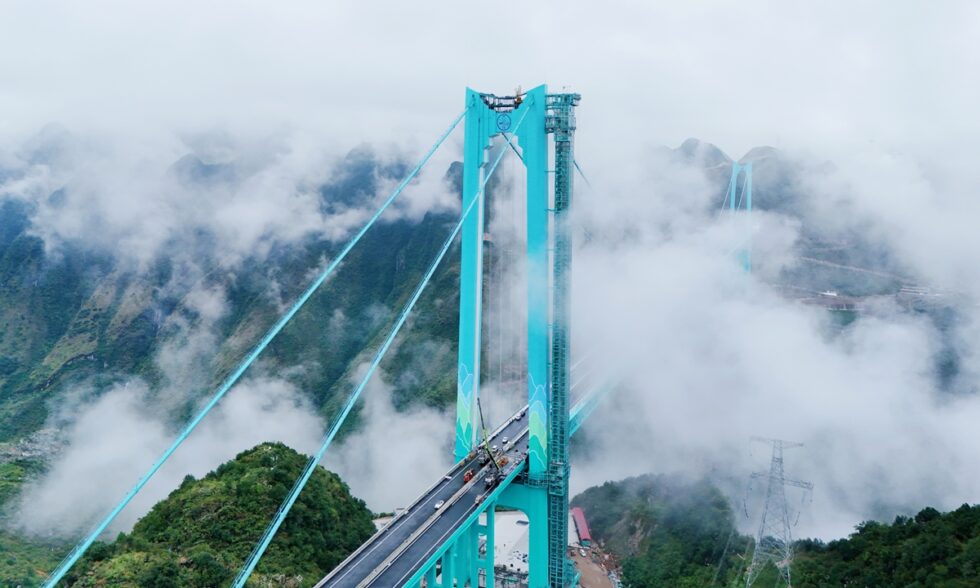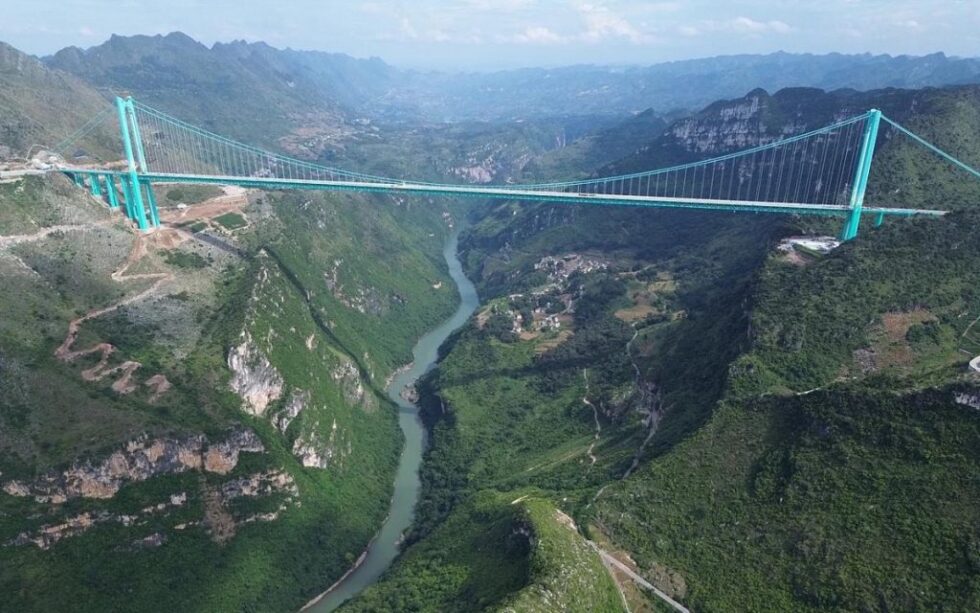Huajiang Grand Canyon Bridge in China (Chinese: 花江峡谷大桥): world’s tallest bridge opens in 2025

In the mountainous province of Guizhou in Southwest China, a new engineering landmark has been unveiled: the Huajiang Grand Canyon Bridge. After three years of construction, the bridge officially opened to traffic in September 2025. The project, carried out by the China Communications Construction Company (CCCC) in cooperation with local authorities, cost several billion yuan and was largely financed by state investment programs aimed at modernizing remote regions. With the new connection, travel time across the canyon has been reduced from two hours to just two minutes, reports G.business.

Record-breaking dimensions
The Huajiang Grand Canyon Bridge rises 625 meters above the Beipan River, making it the tallest bridge in the world. Its main span measures 1,420 meters, and the total length of the structure is an impressive 2,890 meters. To put this into perspective, the bridge is almost nine times higher than the Golden Gate Bridge in San Francisco and significantly longer, setting a new global benchmark in bridge engineering.
Construction under extreme conditions
Work began in 2022 and involved thousands of engineers, technicians and workers. Due to the steep cliffs and complex terrain, many components had to be transported by helicopter and cable systems. The bridge required over 40,000 tons of high-strength steel, while anchor blocks were drilled deep into the mountain to withstand strong winds and seismic activity. The structure is equipped with state-of-the-art monitoring systems that track wind speeds, rainfall, seismic movement and landslide risks in real time.
Geographic location and strategic role
Located at 25.6845° N, 105.4128° E, the bridge spans the spectacular Huajiang Canyon, nicknamed the “crack of the Earth” due to its depth and scale. Before the bridge, motorists faced dangerous detours on narrow mountain roads often blocked by landslides. Now, the bridge provides a direct and safe link between the cities of Liupanshui and Bijie, strengthening integration into China’s national expressway network.
Guizhou – China’s bridge province
Interestingly, the previous record for the world’s highest bridge was also held by Guizhou: the Beipanjiang Bridge, opened in 2016, with a vertical clearance of 565.4 meters. With the new Huajiang structure surpassing this record, Guizhou cements its reputation as China’s “bridge province”. Today, the region is home to nearly half of the 100 tallest bridges in the world, with more than 30,000 bridges built in total, three of which are ranked among the highest globally.
Economic and touristic impact
Guizhou has long been one of China’s poorer provinces, but large-scale infrastructure has become the backbone of its economic transformation. The Huajiang Grand Canyon Bridge is expected to boost trade, local logistics and especially tourism. Authorities plan to expand the site into a visitor destination with viewing platforms, hiking trails and promotional campaigns. For international travelers – including those from Germany – the bridge is set to become a new must-see attraction alongside iconic Chinese landmarks such as the Three Gorges Dam and high-speed rail networks.
Symbol of Chinese engineering power
The Huajiang Grand Canyon Bridge is more than a transport project – it is a symbol of national strength and engineering excellence. Despite harsh weather conditions, frequent landslides and seismic risks, China succeeded in building a structure that experts already call a “wonder of modern engineering”. It is expected to draw tourists, inspire future megaprojects and remain a global benchmark for decades to come, reports Renewz.de.
Photos: Xinhua/Tao Liang